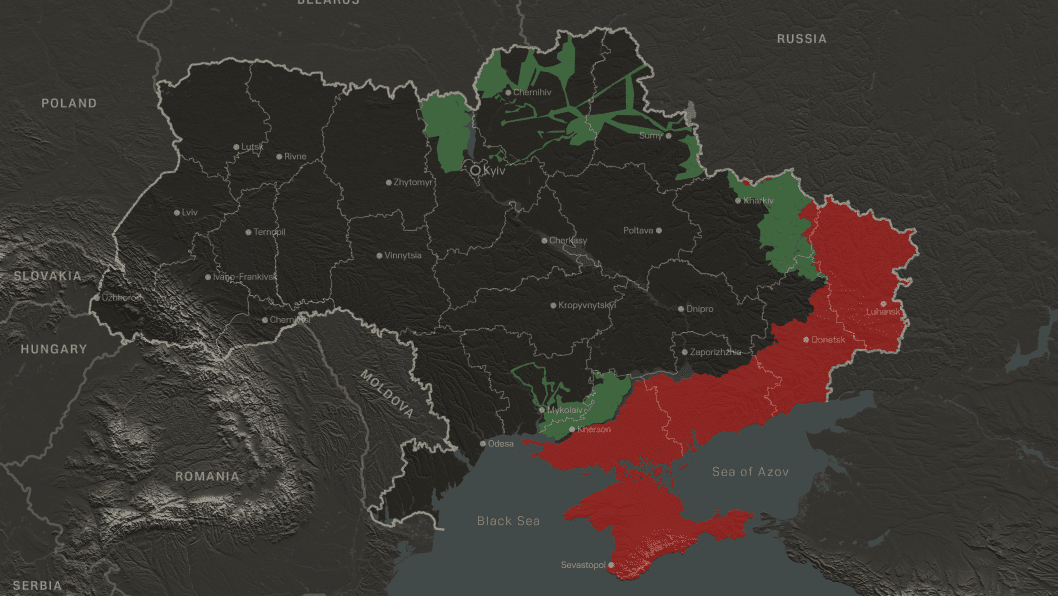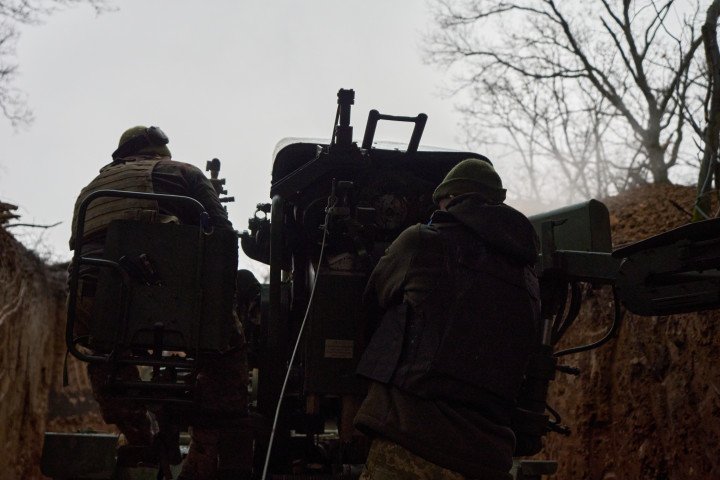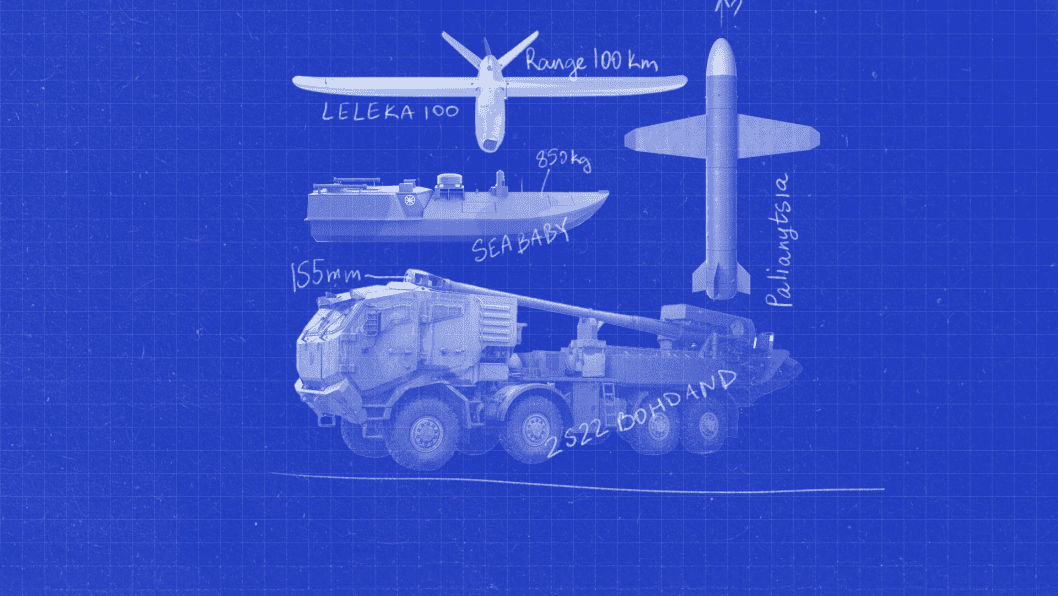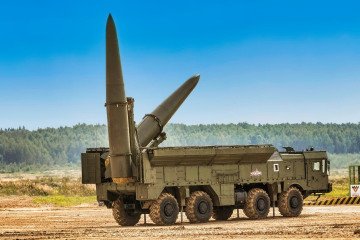- Category
- War in Ukraine
How Ukraine Has Adapted to Europe’s Largest War Since WWII

Despite Russia’s overwhelming economic and military advantage, Ukrainians have adapted and held their ground for three years against Moscow’s relentless full-scale invasion.
On February 22-23, Russia unleashed its largest drone assault on Ukraine, sending 267 Shahed UAVs into the night. Half—138—were shot down. But many—119—vanished from radar, “location lost,” as Ukraine’s Air Force puts it. What does that mean? While high command remains tight-lipped, one thing is clear: Ukrainians have cracked the code of Russian Shahed drones, jamming them mid-flight with electronic warfare (EW).
The Ukrainian army learned this over three years of Russia’s full-scale war. Before February 2024, no country had ever launched 267 drones at another nation in a single night—or successfully defended against such an assault. Ukraine has become a pioneer in a field where no nation would wish to lead.

This is just one example of adaptation—specifically, military adaptation. Over the past three years, Ukraine has learned to live without electricity, manage a wartime economy, build businesses in an environment where “black swans” and “gray rhinos” are routine, and even create new and innovative solutions. UNITED24 Media has gathered several striking examples.
War
Ukraine relies heavily on its allies—the United States, Canada, and Europe—for military support, including air defense missiles, aircraft, artillery shells, tanks, and armored vehicles.
However, during Russia’s full-scale invasion, Ukraine has made significant strides in several military domains, in some cases building entire projects from scratch. For example, Ukraine developed and successfully deployed naval drones that have cleared the Black Sea of Russian ships, allowing maritime corridors to resume operation. The technology is evolving rapidly: naval drones have now become platforms capable of launching other drones and firing missiles, with documented cases of them striking both ground and aerial targets.
Flying drones have grown into a massive industry that gained global prominence due to the war in Ukraine. Early in the invasion, Ukrainian troops demonstrated that even a $1,500 DJI Mavic could be an effective reconnaissance tool, while a $500 FPV drone could destroy a $2 million tank. Drones now enable Ukraine to conduct reconnaissance and strike Russian military targets up to 1,800 kilometers behind enemy lines. In 2024 alone, Ukraine produced 1.4 million drones of various types, and that number is expected to grow. Practically nonexistent as a military asset in 2022, drones have become a cornerstone of Ukraine’s defense industry, with over 200 companies operating in the sector.
Alongside drones, Ukraine needed more powerful weaponry—missiles and long-range systems capable of striking Russian military facilities. The development of hybrid rocket-drone systems began with the Palianytsia. In less than three years, Ukraine has built a range of long-range missiles and rocket drones, with plans to produce 3,000 units in 2025. To accelerate this effort, the government is collaborating with private contractors, opening the market, and providing grants for development.

Within two years, Ukraine has become a global leader in artillery systems production. Each month, up to 20 Bohdana self-propelled howitzers roll off assembly lines—one of the highest production rates among global weapons manufacturers. The goal isn’t just to reduce reliance on Western supplies but to saturate the front lines and achieve parity with Russia, which has thousands of artillery systems of Western origin in its stockpiles. Ukraine is also working to establish domestic production of artillery shells and mortar rounds.
Uniquely, Ukraine has pioneered the use of military robots. Dozens of teams are developing robots for logistics, combat operations, and evacuation.
Far from halting innovation, the war has accelerated the development of Ukraine’s defense industry. The country is not only a testing ground for Western weapons but also a hub of homegrown military innovation.

Economy
While the war effort is costly, its expenses still fall short of what the United States spent in Afghanistan. In 2024, the war cost $100 billion: $40 billion in Ukrainian losses, $35 billion from the United States, and $25 billion from Europe.
These figures show that Ukraine’s economy has not ground to a halt despite the war. In the first months of the full-scale invasion, GDP fell by 35%, but it has been recovering ever since, reaching 4% growth in 2024. Economists predict that once the fighting ends, growth could accelerate to 6% or more, driven by a surge of reconstruction investments. Inflation is expected to remain below 10%.
Ukraine’s economy depends on support from international partners, who cover the country’s social expenditures—up to $40 billion annually—allowing Ukraine to sustain its military effort.
At the same time, Ukrainian businesses continue to operate. Repeated Russian attacks on energy infrastructure posed a serious threat, but businesses found solutions that became known as the “generator economy.” For three years, tens of thousands of generators and portable power systems like EcoFlow have helped maintain power during outages. Large companies have invested in their own gas-powered or renewable energy systems.
Perhaps the clearest example of rapid adaptation is the agricultural sector. When Russia blocked Ukraine’s Black Sea ports, grain exports shifted to European ports via rail and trucks. At the same time, port infrastructure along the Danube River expanded, achieving operational capacity within months.
The development of naval drones and the removal of Russian ships from the Black Sea have allowed “Greater Odesa” port areas to resume operations. Within a year, large-scale maritime navigation returned: first with grain shipments, then other cargo. In 2024, more than 100 million tons of goods were transported—still below pre-war levels, but several times higher than in 2022.
Challenges remain, including labor shortages, uncertainty, and military risks. Constant Russian missile and drone strikes mean that the cafe where you had coffee yesterday might be gone by morning. Predicting business operations in such conditions is difficult. Perhaps that’s why the two defining words for Ukrainian businesses are “resilience” and “adaptation.” More women are entering traditionally male professions, and where labor shortages persist, businesses are automating processes.
Despite the obstacles, Ukraine’s economy continues to attract new investments. In recent months, investments in manufacturing alone have totaled around $1 billion—a significant figure for Ukraine. French holding company NJJ acquired telecom assets worth over $600 million and plans to invest hundreds of millions more in developing its new holding. This doesn’t even account for military investments, with European companies already building production facilities in Ukraine.
Innovation and culture
The war has reshaped Ukrainians’ priorities, with all efforts focused on holding back Russia’s army—whose forces in Ukraine alone outnumber any European military. Yet, Ukraine continues to do what enrages Putin most: it lives and evolves.
Ukraine’s innovations aren’t limited to the military. One standout example is the government’s digital services platform, designed to move public services online and eliminate the need for bureaucratic visits. It’s working: with 21 million users, Diia is Ukraine’s most popular app (apart from messaging apps), offering dozens of services and hundreds more via the web version. Starting a business takes just 10 minutes, obtaining official documents takes seconds, and even getting married can be done online. Ukraine is ready to share this technology with the world—four countries are already exploring implementation.
Ukraine’s banking sector, which never stopped operating despite the war, has also adapted. Bank cards can be ordered online and delivered within a day in Ukraine or within days worldwide. Few countries can match this level of convenience—“conservatism” is a word Ukrainian banks have long left behind.
Another example is the close integration between the military and civilians. Apps allow civilians to report the location of Russian military equipment, and the ePPO app (PPO meaning “anti-aircraft defense”) lets anyone who spots a Russian Shahed drone mark its location on a map, helping Ukrainian military track and intercept its trajectory.
This interconnection extends to digital donations: alongside subscriptions to Netflix and Spotify, Ukrainians subscribe to donation platforms, automatically sending funds to volunteer organizations weekly, monthly, or even daily. This culture of donations represents a remarkable new chapter in the development of Ukrainian society.

But it’s not just about charity and aid. Freed from the dominance of the Russian narrative, Ukrainian culture has found its stride. Theater has become so popular that scoring a ticket is a challenge. The Witch of Konotop theater play is making headlines worldwide and touring across continents. Ukrainian comedians are packing the country’s largest venues, while music and cinema are thriving with newfound space to grow.
The war has raged for three years. Ukraine has learned to adapt—to endure, live, and even create. Yet there’s one thing no one can adapt to: the loss of human life. Every day, Russia kills Ukrainians. And the world must do everything in its power to help stop it.
-29a1a43aba23f9bb779a1ac8b98d2121.jpeg)
-6359eca46c72bde40a90abaaadd6eaa8.png)


-206008aed5f329e86c52788e3e423f23.jpg)
